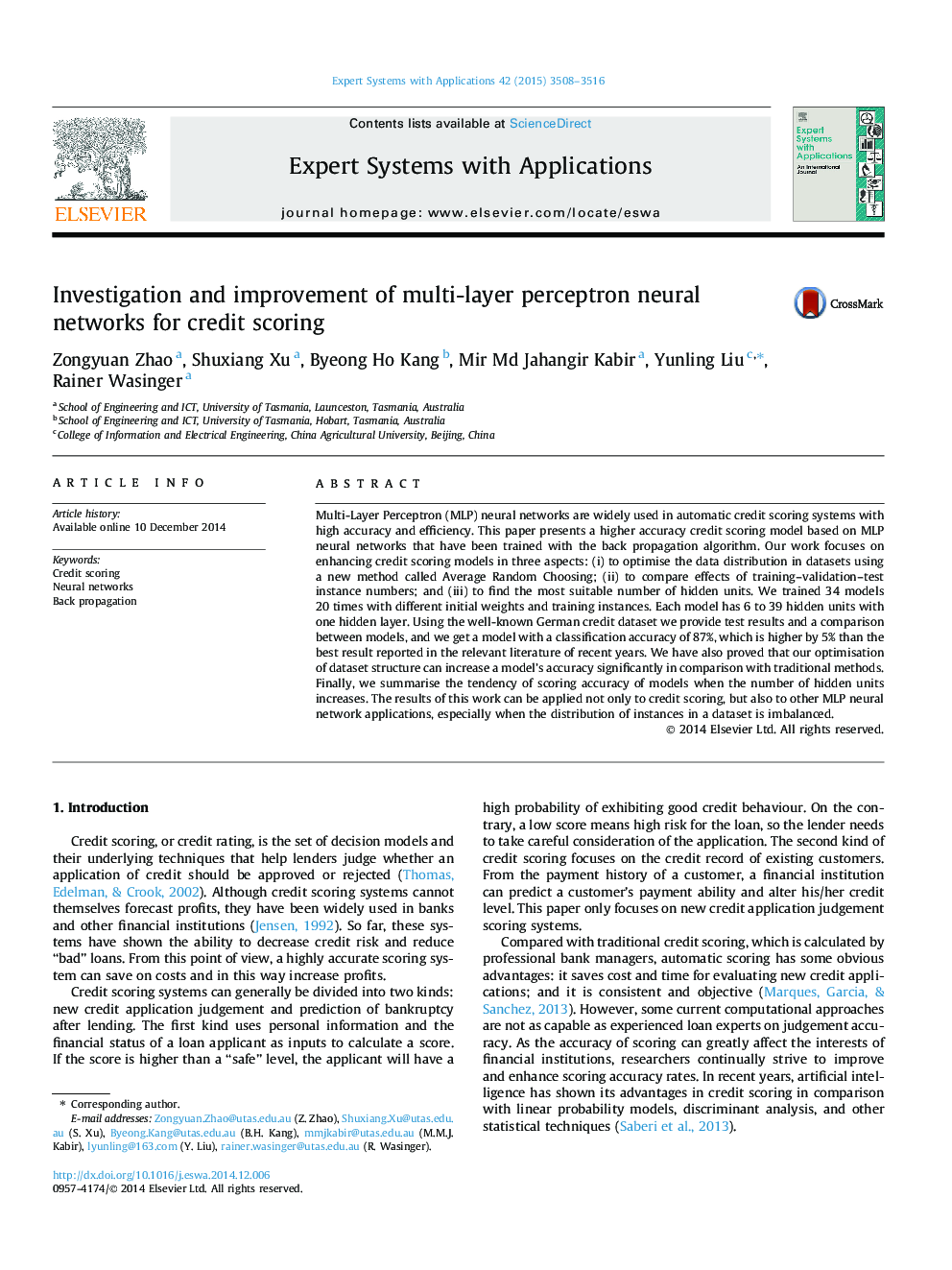| Article ID | Journal | Published Year | Pages | File Type |
|---|---|---|---|---|
| 383510 | Expert Systems with Applications | 2015 | 9 Pages |
•We present an Average Random Choosing method which increases 0.04 classification accuracy.•Investigate different MLP models and get the best model with accuracy of 87%.•Accuracy increases when the model has more hidden neurons.
Multi-Layer Perceptron (MLP) neural networks are widely used in automatic credit scoring systems with high accuracy and efficiency. This paper presents a higher accuracy credit scoring model based on MLP neural networks that have been trained with the back propagation algorithm. Our work focuses on enhancing credit scoring models in three aspects: (i) to optimise the data distribution in datasets using a new method called Average Random Choosing; (ii) to compare effects of training–validation–test instance numbers; and (iii) to find the most suitable number of hidden units. We trained 34 models 20 times with different initial weights and training instances. Each model has 6 to 39 hidden units with one hidden layer. Using the well-known German credit dataset we provide test results and a comparison between models, and we get a model with a classification accuracy of 87%, which is higher by 5% than the best result reported in the relevant literature of recent years. We have also proved that our optimisation of dataset structure can increase a model’s accuracy significantly in comparison with traditional methods. Finally, we summarise the tendency of scoring accuracy of models when the number of hidden units increases. The results of this work can be applied not only to credit scoring, but also to other MLP neural network applications, especially when the distribution of instances in a dataset is imbalanced.
